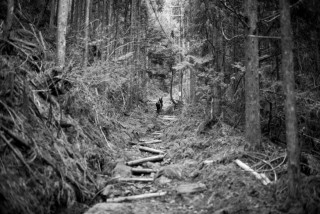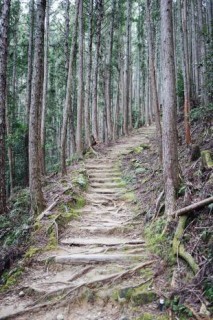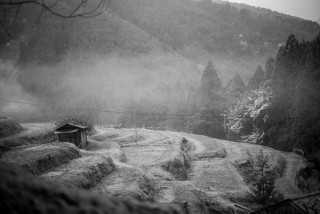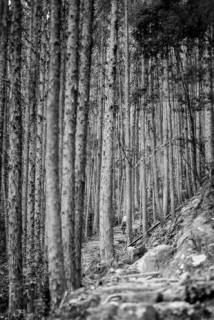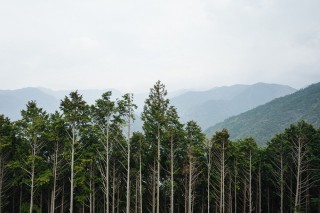Loading
Search
▼ Kumano Kodo: a Trek to Japan’s Sacred Heart
- Category:Mountain
Two photographers walk the nation’s legendary pilgrimage route, capturing the eerie solitude of a spiritual path that still dwarfs humans
by Cameron Mckean
The 1,000-year-old Kumano Kodo pilgrimage route is located in Wakayama Prefecture. It takes roughly eight days to travel more than 100 kilometers — approximately 148,000 steps — from Takijiri on the Nakahechi route to Mount Koya (Koya-san) along the Kohechi route.There are numerous inns accommodating pilgrims along the way, offering complicated breakfasts to get the ball rolling each morning, and satiating dinners at the end of each day. Photographers Craig Mod and Dan Rubin completed the Kumano Kodo route in April 2016 and are now in the process of publishing a book of photographs on their experiences. We asked them to give us a few thoughts on their trek. How did the walk begin?
Mod: I began walking old Japanese paths with walking scholar John McBride three years ago. Dan and I had been trying to plan an adventure for years. Our schedules finally collided.
A shack, rice paddies and a recently blossomed cherry tree just outside of Miura Guchi | CRAIG MOD
Was what you wanted to capture different from what you actually captured?
Mod: We went in with few expectations, nor knowing exactly how photogenic the walk would be. In a way, all the images were surprises, and every image was different than what we expected.
Rubin: As this was my first visit to Japan, I wasn’t entirely sure what to expect — the only stories I’d heard from friends (aside from Craig) were of the cities, so to experience the country in this way first allowed me to be completely open and just take it all in. Why did you want to do the pilgrimage?
Mod: Pilgrimage walks have become sneaky ways for me to invite writers, artists and photographers from around the world to hang out in Japan. Dan and I have been trying to find a good excuse to make a book for years. This seemed like a great one.
Rubin: I’ve enjoyed walks and hikes since I was very young — through Florida swamps with my parents, overnight treks while in Boy Scouts or just wandering to clear my head. Having grown up at sea level (near Miami), the idea of hiking through mountains was extra-exciting. Why are walks and going on pilgrimages important to you?
Mod: They’ve helped solidify my reason for living in Japan. I’ve been here for nearly 15 years; I speak the language. These pilgrimages are direct historical lines back 1,000 years. It’s a privilege and honor to be able to walk them. It’s also a privilege to connect with all those we met along the way, to hear their stories and share our own.
Rubin: I’m one of those people who needs to move in order for my brain to properly function — a kinetic thinker, of sorts. Movement of any sort — running, swimming, walking — has always held an important place in my life. After this experience, I’ll definitely take more long walks with good companions.
Cedar trees between Hongu Taisha and Totsukawa Onsen | DAN RUBIN What memories have lingered of the walk since you have left?
Mod: An old monk was walking his dog a few kilometers away from Koya-san. He helped us find a path we’d missed. I’d like to take his dog for a walk some day.
Rubin: The older couple who hosted us one night, squeezing three grown men into the tiny Yunomine Onsen; light rain drifting through the dense forests; ancient trees towering over the cemetery at Koya-san. It’s difficult to choose one, but if I must: Waking up just before sunrise the morning after the first day to a valley filled with mist, the layers of mountains quietly receding into the distance.
- September 1, 2016
- Comment (0)
- Trackback(0)


